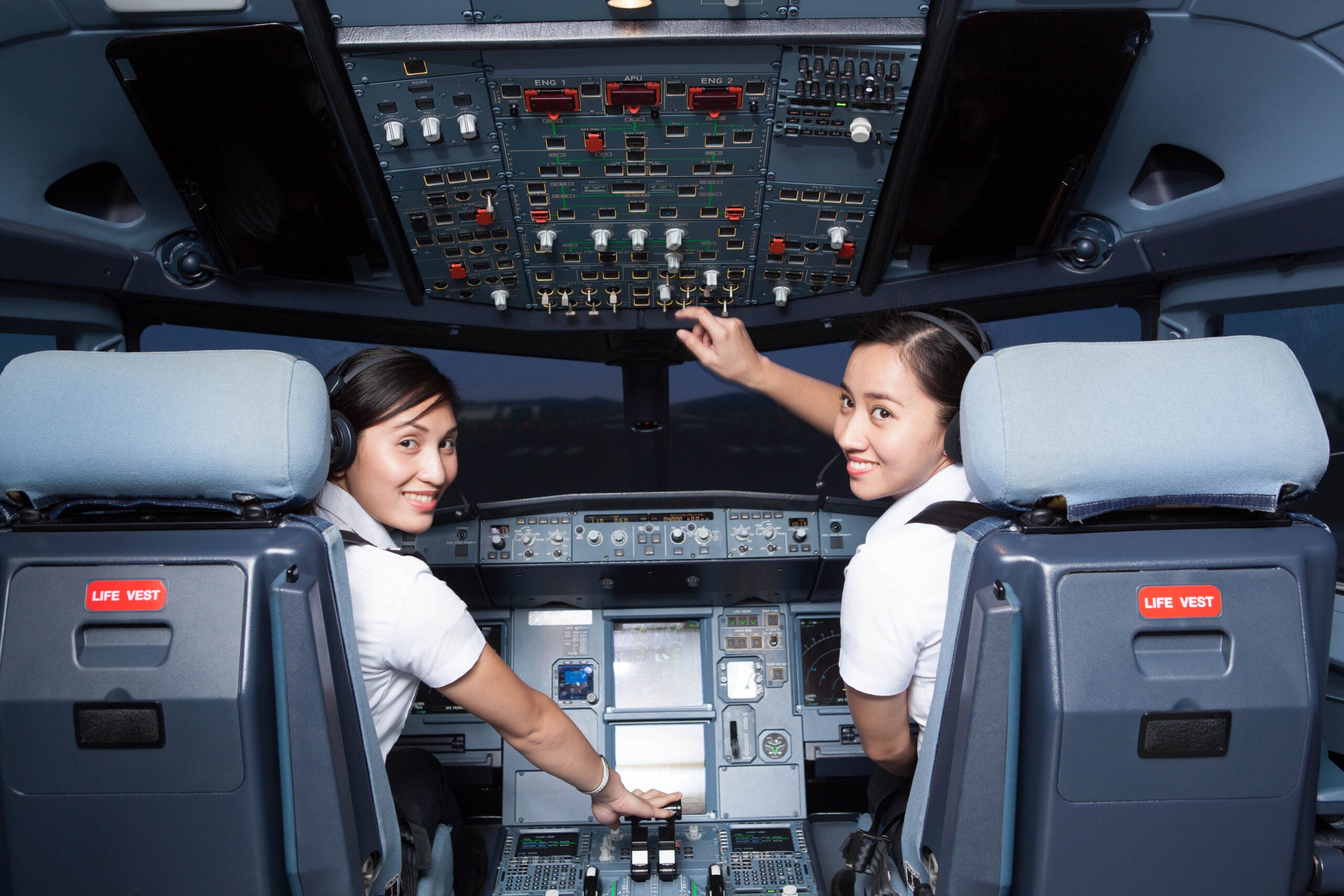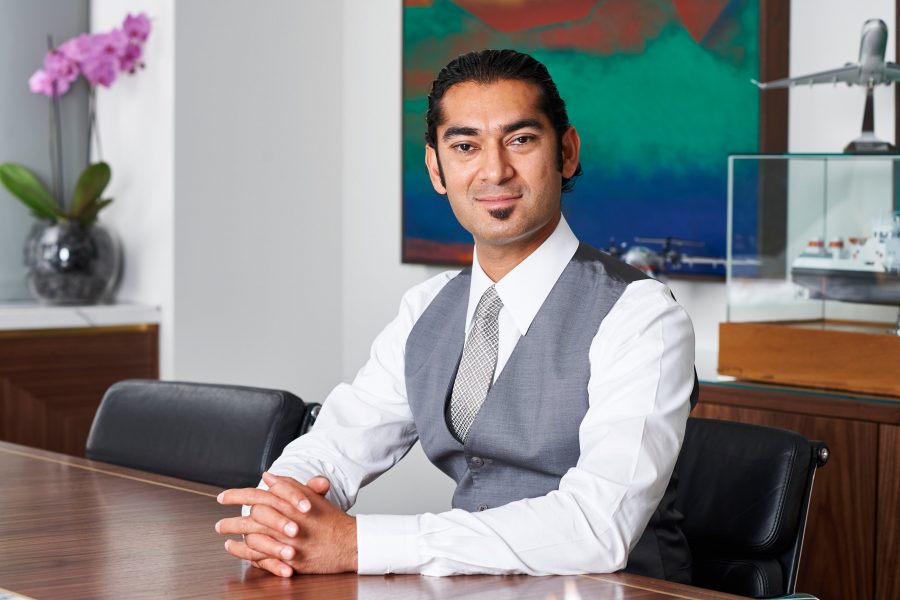
Gender inequality in the aviation sector is nothing new. According to the International Air Transport Organisation, the number of women holding a C-level position is in the single low digit.
This is particularly evident when it comes to women working on aircraft: how many times have you seen a woman captain on your flight? How many more times have you seen women working as flight attendants?

Discover B2B Marketing That Performs
Combine business intelligence and editorial excellence to reach engaged professionals across 36 leading media platforms.
This is due to a series of socio-cultural and economic reasons. Not only are there preconceived notions of what kinds of different jobs women and men are more able to do but also economic reasons make it more difficult for women to become pilots.
The situation only worsened during the Covid-19 pandemic. To help rectify it, airlines and flight schools – including the Alpha Aviation Group – are championing women in the cockpit.
Alpha Aviation executive director Bhanu Choudhrie explains the historical reasons behind such a huge imbalance and what the industry can do to level it up.

US Tariffs are shifting - will you react or anticipate?
Don’t let policy changes catch you off guard. Stay proactive with real-time data and expert analysis.
By GlobalData
Credit: Alpha Aviation Group.
Ilaria Grasso Macola (IGM): Why is there such an imbalance between the number of female and male pilots?
Bhanu Choudhrie (BC): Currently just 5% of the world’s 290,000 licensed commercial pilots are women. This means that for every twenty flights, just one of them will have a female pilot in the cockpit. Unfortunately, this gender imbalance has become a long-established trend within the aviation industry.
Whilst pre-conceived perceptions in society about individuals’ capabilities and suitability to certain roles are starting to change, there is still more that needs to be done in order to really challenge the long-held gender stereotypes that remain in the industry and to open up new opportunities to women.
Today, it is still broadly suggested that being a pilot is a male job and, in many instances, women are viewed with prejudice if they appear to possess similar characteristics to men that would make them suitable for the role. Now, more than ever, it is imperative that this mindset is overhauled.
IGM: What are the factors that contribute to women not going into aviation as pilots?
BC: There is still a widespread belief that pursuing a career as a pilot is more suited to men. This entrenched perception, coupled with the fact that there are very few female role models in the sector, is making it challenging for women to break into the industry. On top of this, the irregular schedule often creates additional issues for women who typically take the lead with childcare.
Social customs also play a role. For example, traditionally women have been prohibited from working at night in the Middle East. This has made it extremely difficult for women to commit to the flexible work schedule that being a pilot requires. These restrictions are now beginning to shift, with Saudi Arabia leading the way and passing landmark reforms that enable women to work at night – including in the air transport sector. Now it’s crucial that these reforms are more widely adopted so that more women are encouraged to pursue a career as a pilot.
In addition, there are also economic barriers that can be equally difficult to surmount. For example, training to become a pilot has traditionally been a lengthy and expensive process, and the financial cost can seem more pronounced to women, for whom a path into a career in aviation has not been laid out.
IGM: According to research, in 2015 the number of women pilots was around 3% now is around 5%. What has changed in the last six years?
BC: Over the past six years, we have started to see an increase in the number of female pilots, which is encouraging and undoubtedly a shift in the right direction. This trend has largely been driven by broader attitudinal shifts about the types of jobs women see themselves working in and by a number of pioneers who are raising the profile of women in aviation and demonstrating that there is a rewarding path to attaining a pilot license.
Alpha Aviation Group is proud to have trained Ghada Al Rousi, the first female Emirati pilot to fly with Air Arabia, who graduated from Alpha Aviation’s UAE platform and is making strides to address this imbalance and champion women in aviation.
There has also been a conscious effort from a number of training schools and airline groups to implement changes to how the sector attracts recruits and to make the process more accessible to women. For example, at our UAE base, Alpha Aviation has started running the Multi-Crew Pilot License (MPL). This is a shorter, more simulator-focused way of training that not only opens up opportunities for prospective cadets from less privileged backgrounds but also offers a more flexible training programme and quicker route to qualification – reducing the financial outlays often more challenging for female cadets to cover.
IGM: What can the industry do to rectify the gap?
BC: Although great steps have already been taken to address the gender gap, it’s crucial that the industry continues to challenge traditional stereotypes and empower women to pursue a career as an aviator.
Firstly, positive female role models are essential. Our Filipino training centre has had its first 100% female cadet class, and the current course intake is well above the industry average at 12% female. It is important that achievements such as these are celebrated among the industry and are used to encourage more female cadets to follow suit.
On top of this, greater career guidance is needed. Both airline groups and training facilities need to spread greater awareness for championing women in aviation. Visiting schools and universities offers a great opportunity to help lay out the path into a career in aviation for women and can help to break down some of the barriers that have previously deterred women from aspiring to become a pilot.
Another way for the industry to balance the gap is to offer bursary programmes. The financial cost is still a key challenge and often seen as a considerable risk. Offering financial support may help give women the necessary confidence to pursue a change in career and become a pilot.
IGM: How has Covid-19 impacted the gender gap?
BC: Air travel has been one of the hardest-hit industries during the Covid-19 pandemic. With flights cancelled, fleets grounded, and airports closed, many pilots have been put on furlough or made redundant during the crisis. This unprecedented upheaval has left many questioning whether they should continue to pursue a career as an aviator which has put the gender imbalance under even greater pressure.
Now it’s important that training facilities and airlines continue to work together to provide continuity and a path forward from this crisis. For example, we have been working closely with the industry regulators to implement new training programmes, including the use of e-learning, to help our female cadets stay on track during this turbulent time. As air travel starts to open up again, there is going to be a renewed demand for trained pilots who are ready to take to the sky. Therefore, it’s important that the sector works to support female cadets now and show them that are still great opportunities to pursue a career as an aviator as we emerge from the pandemic.
IGM: In your opinion, will we see a rise in female pilots in the short to medium-term future?
BC: Despite the Covid-19 pandemic vastly halting the aviation industry for the past year, a recent report by CAE shows that the global civil aviation industry will still require 264,000 new pilots in the coming decade. If we are to make up this shortfall, finding a way to shift the percentage of women in the industry is essential and I am hopeful that this demand for pilots will encourage more female cadets to seize the opportunities that are opening up across the industry.
However, we will also need to see a much more proactive approach from key players across the industry to pave the way for female cadets. For example, the shift to e-learning not only provides the flexibility for women who may have other responsibilities and societal pressures, but a lack of physical constraints will allow for larger classes and greater access for any women who want to enrol.
We are already starting to see a rise in female pilots. Now it is crucial that the industry continues to empower women to pursue a career in the cockpit so that this momentum continues to gain pace.





